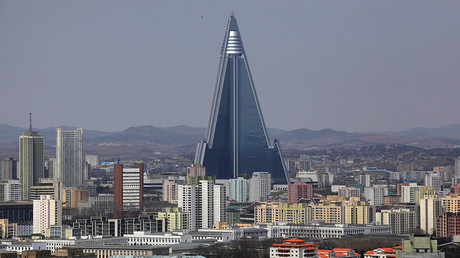The Japanese Defense Ministry will include costs related to the Aegis Ashore system when drafting a budgetary request for the 2018 fiscal year, NHK reported.
The Aegis Ballistic Missile Defense System (ABMD) is aimed at providing defense from short to intermediate-range missiles. It consists of BMD-capable ships as well as a ground-based configuration.
Japan is already using a land-based version of the Aegis advanced radar system. It is thought that two or three Aegis Ashore batteries would be needed to defend the whole of Japan, at a cost of 70 to 80 billion yen (US$638.5 million to $726.6 million) per battery, according to the Mainichi.
Defense Minister Itsunori Onodera is expected to explain Tokyo’s plans during talks with US Defense Secretary Jim Mattis in Washington on Thursday, government sources told the Asahi Shimbun.
That meeting will follow talks between US Secretary of State Rex Tillerson and his Japanese counterpart, Taro Kono.
Meanwhile, the Japanese Defense Ministry also hopes to increase its number of Aegis-equipped destroyers from four to five by the end of the year, accelerating a previous plan which aimed to boost the number by March 2018, according to NHK.
In addition, the Defense Ministry has also decided to develop an anti-stealth radar system which could locate ballistic missiles with stealth capabilities. Work on the system will begin next fiscal year, with an expected budget request of 19.6 billion yen ($177 million), according to the Asahi Shimbun.
The reported plans come after Japanese Defense Ministry officials told Kyodo news last week that Tokyo was considering the deployment of the Patriot Advanced Capability-3 (PAC-3) system at ground Self-Defense Force bases in the western prefectures of Shimane, Hiroshima and Kochi – areas which North Korea said its missiles could fly over.
Japan’s missile defense program currently includes the Maritime Self-Defense Force’s (SDF) Aegis destroyers, aimed at shooting down airborne missiles, and the Air Self-Defense Force’s PAC-3 system, which is aimed at countering missiles that evade Aegis interceptors.
North Korea has conducted several missile tests in recent months, which have been slammed by the US. Pyongyang strengthened its verbal threats against Washington last week, when it announced that it was developing a plan to strike Guam, which would include missiles passing over Japanese prefectures.
The threat came just hours after US President Donald Trump warned Pyongyang of “fire and fury” if its threats continued. Following the Guam threat, Trump tweeted that US military solutions were “locked and loaded.”
Military solutions are now fully in place,locked and loaded,should North Korea act unwisely. Hopefully Kim Jong Un will find another path!
— Donald J. Trump (@realDonaldTrump) August 11, 2017
Pyongyang later clarified that it is ready to put off its Guam plan, while urging Washington to refrain from threats against North Korea. Trump praised the move as a “wise” decision on Wednesday.
Kim Jong Un of North Korea made a very wise and well reasoned decision. The alternative would have been both catastrophic and unacceptable!
— Donald J. Trump (@realDonaldTrump) August 16, 2017
Meanwhile, Japan has been repeatedly flexing its muscles with the US, including in joint air maneuvers southwest of the Korean Peninsula on Wednesday. In addition, annual US-Japan military drills are scheduled to take place next week, according to Reuters.
North Korea has slammed Washington and its regional allies over the numerous drills, claiming such actions could provoke “actual war.”
Source Article from https://www.rt.com/news/399904-japan-aegis-ashore-defense/?utm_source=rss&utm_medium=rss&utm_campaign=RSS
 RSS Feed
RSS Feed















 August 17th, 2017
August 17th, 2017  Awake Goy
Awake Goy 

 Posted in
Posted in  Tags:
Tags: 













